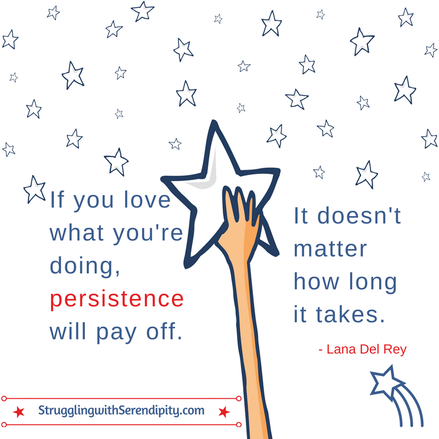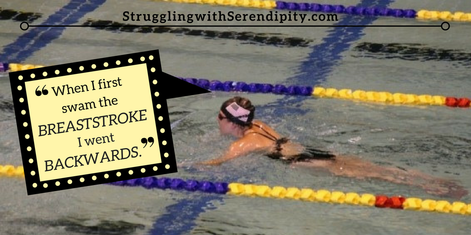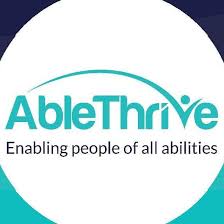|
(This blog tells my family's story. To see more, click "blog" at the top of this webpage.)
My last weeks in Cambridge as a personal care assistant and Harvard Coop employee ended with easy goodbyes. I loaded the car—twice—with Beth’s backup wheelchair, single futon, lift chair, floor lamp, refrigerator and microwave unit, and more. I labeled everything and pushed my limits by moving the items by myself to the basement storage room at the upperclass house (dorm) where she would live in the fall. Everything hurt after. I scribed for the student with cerebral palsy for the last time as Beth finished her final exams and swam her last practice at Blodgett until September. We watched colorful dragon boats race on the Charles River before I packed the car for the long drive to Ohio. I couldn’t wait to be back home for the summer and planned to appreciate every minute. The upcoming school year, John and I would have an empty nest in Tiffin with Beth at Harvard, Ben in Columbus, and Maria graduating early in December to work in Boston near her sister. I wanted my kids to find their own way in life, but at the same time, I wished they could live with me forever. Feeling sorry for myself sparked a radical idea: moving to the Boston area if John retired in two years, after 30 years of teaching in Ohio. Maybe. Summer vacation officially started with an additional five-hour drive to Chicago for the wedding of Rakhi’s brother. The short drive seemed easy after the trek from Boston. I loved our road trips in Beth’s blue car with CDs and sing alongs. At one of the wedding events, I wore a long blue dress with a tunic top to a beautiful ceremony. At the evening garba, Beth danced in a short sequined top that bared her midriff above a matching ankle-length skirt, a gift made in India from Rakhi’s parents. We found out at the garba that a woman with a bare midriff meant she was looking for love. I never tired of adding to Beth’s contagious laughter. Back in Tiffin, Beth reunited with her best friends, Ellen and Lizzy, not knowing it would be one of their last summers together. Maria gave Beth a special gift, a beautiful sunflower quilted wall hanging that she sewed for a college class on women’s traditions. Last spring, John attended presentations at Heidelberg when the students spoke about their quilts. I wished I could have heard Maria talk about her sister’s favorite flower and the passion for life they shared. When I lived in Cambridge, I also missed hearing my oldest daughter sing at Heidelberg choir concerts. I wouldn’t miss any more of her solos. Seneca Aquatic Klub practices filled Beth’s calendar for her fourth swimming summer. Peggy showed us an underwater video from the previous summer with sloppy strokes. A recent one with smoother movements reinforced Beth’s belief that mastering the forward freestyle stroke was doable. Two teammates lifted her in and out of the pool as they had for high school practices. One morning, they carried her out to the diving board—under protest. Her attempt to enter the water gracefully ended in a belly flop, but she didn’t lose any sleep over her lack of diving skills. Next: Norway!
8 Comments
(This blog tells my family's story. To see more, click "blog" at the top of this webpage.)
Beth added the song Jump by Van Halen to her music mix at Peggy’s suggestion. At local USA Swimming summer meets, many swimmers wore ear buds and held iPods as they waited to compete. Beth was the only one in a wheelchair—with the perk of a lap to carry the iPod on top of her towel and goggles—but not the only teenager with a disability. In my support role as the Adapted Chairperson of the Ohio Swimming Board of Directors, I talked to other swimmers with visual challenges and limb differences. The teenagers with a disability at those USA Swimming meets had no competition, with no one else in their classification in attendance. They swam in full heats with able-bodied peers who always touched the ending wall before them. Each of them, my daughter included, raced the clock. At a meet in Canton, Ohio, I cheered as Beth reset three American Records and added a brand-new one in the 200 Individual Medley. During a SAK practice at the outdoor pool, dark clouds brewed. I waited at the pool, knowing that the approaching storm would trigger Beth’s tornado anxiety. At the first distant rumblings, she asked to get out of the water. She couldn’t get out and into her wheelchair by herself. Peggy stuck to her club policy and kept the practice running until the siren blared, indicating lightning in the vicinity. That was the only time Beth was not happy with her coach. A time she remembered and teased Peggy about later. Beth wheeled through rain to the car as lightning streaked the sky. We couldn’t get home fast enough. Her trauma abated after she immediately checked the computer to confirm the absence of tornadoes in Tiffin. An Ohio girl, tornadoes didn’t trigger anxiety for me, but other things bothered me. I worried about my job, about the residents at the group home I managed and what might happen next. At home, Beth’s transition to college dominated my thoughts. And living in a strange city by myself in the fall. (This blog tells my family's story. To see more, click "blog" at the top of this webpage.)
Beth’s third swimming summer began with a task she could put off no longer. She called and talked to the GTAC coach about her decision to change teams. Stressful, despite our gratitude for Beth's first club team and the practicality of swimming with a hometown coach. Peggy coached her individually during one-on-one sessions in addition to regular Seneca Aquatic Klub practices. Beth swam with familiar faces from the high school team and formed new friendships with Peggy’s daughters, both college swimmers who helped with the club team. The close-knit, small-town swim team celebrated with a thrilled Beth after she swam her first mile in one practice: 1,760 yards, over 70 lengths of the 25-yard pool. I watched her finish the feat, marveling at what she accomplished with no leg function. In intensive care after the accident, none of us—not even Beth—imagined her in a pool by herself. Or floating. Or swimming actual strokes. Or competing. Or achieving her first mile in one practice, the first of many. On a beautiful day in mid-June, family and friends gathered at our home. John and I hosted a party for Ben and Beth, both graduating with honors. Ben earned two degrees, in English and physics, from Ohio State. I set out Beth’s summer scrapbook and other memorabilia. A plain binder held many awards and scholarship letters, including one for $5,000 from the ChairScholars Foundation, renewable for four years. A reference letter from a high school staff favorite, Mrs. Roberts, summed up the four years since Beth's spinal cord injury. “The mild-mannered, quiet, bright little girl we met as an incoming freshman has grown into an assertive yet humble young woman. Beth is in a wheelchair but is by no means wheelchair bound." (This blog tells my family's story. To see more, click "blog" at the top of this webpage.)
The Paralympic Trials meet in Minneapolis created anxious uncertainty. Would Beth make the U.S. team going to Greece? If she did, could she leave Athens early to start her freshman year at Harvard? Additional stress: Beth would attend Trials as a member of the Toledo team, yet she had decided to switch to her hometown team. ...And continued to put off telling GTAC. Coaches from both teams would be at Trials. Previous times and records faded to irrelevancy. The only races that counted at Trials would take place in the three days of the meet. This fact put the few swimmers with quadriplegia at a disadvantage, since they had a higher likelihood of health issues that impacted performance. The first year Beth swam competitively, her times varied widely. Three years later, she was stronger with fewer health issues. As a result, her races usually fell into a more consistent range. I updated my list of Beth’s best times and official records. I hoped to add to my list at Trials. However, for an S3 swimmer, new American Records were no guarantee for a spot on the U.S. Paralympic team going to Greece. John, Beth, and I flew to Minneapolis with the help of a Challenged Athletes grant. Airport security glanced in our direction and waved Beth through. She put up with a cumbersome process to help her to an aisle seat in the plane. John and I climbed over her to get to the middle and window seats. At the hotel, Beth twisted nail polish bottles open with her teeth for her pre-meet ritual. Her fingernails shined in red, white, and blue, fitting choices for Trials. She didn’t care about her painted nails looking less than perfect. Beth trusted that more practice would yield better results—like so many other things. Next: A Teenager's First Trip Overseas? (This blog tells my family's story. To see more, click "blog" at the top of this webpage.)
Beth decided to switch club teams from Toledo’s GTAC to the Seneca Aquatic Klub (SAK). Her friends from the high school team also swam for SAK. They practiced down the street from our home in Tiffin, compared to an hour drive to Toledo. The tough part would be telling Beth’s first swim coaches at GTAC. They supported her initial attempts to learn new strokes when it looked impossible to me. She planned to tell them about switching teams at her next practice. When we left intensive care, the doctor placed no restrictions on swimming. Still recovering, Beth insisted on driving to Toledo with me a week later for a swim practice. After a few laps, she felt nauseous, but only asked to get out of the pool to use the restroom. She did not elaborate, complain, or make an excuse. The coach teased and called her a wimp. He honestly didn’t know it was possibly the worst thing to say to a teenage quad, especially one like Beth who was sensitive to appearing weak. In the locker room, I handed her tissues to wipe her eyes. She asked me not to mention the insult or her nausea. I urged her to leave with me for home, but she returned to the workout and actually did wimp out on breaking the news about changing teams. At home, I encouraged Beth to make the phone call to GTAC. A talented procrastinator, she decided to put off telling them until after the Paralympic Trials meet in April. To give them the credit on the chance she made the Athens Paralympic team. Even if she earned a spot, not a sure thing, September in Greece would interfere with Harvard. Should I hope Beth would qualify for the '04 Paralympics? Perhaps not.  (This blog tells my family's story. To see more, click "blog" at the top of this webpage.) Beth’s second swimming summer began with a twelve hour drive from NW Ohio to Minneapolis for her second USA Swimming Disability Championships. Swimming remained complex and challenging, but she drove through Chicago on congested highways with ease. Our flight to Seattle a year earlier was the only time we had been west of Chicago. Our hotel sat across from the parking lot from the expansive pool complex at the University of Minnesota. The first morning of the meet, we met her coach and teammate at the pool. Beth, sixteen, asked me to stay nearby, since I understood her developing routine with goggles, swim caps, towels, bathroom breaks, positioning, and showering. For me, that meant hovering at a distance on the bleachers until she wanted my help. I didn’t mind. I supported her quest for independence, though none of us knew if more progress on that front was even possible. Waiting to swim, new records set in fast races intimidated her. Expectations soared along with nerves. As Beth predicted one year earlier, she qualified for finals. Her previous national meet remained the only one where she had not. Despite the achievement of finals cuts, her morning races were sluggish, followed by discouraging finals times. After another dawdling race on the second morning, Beth’s frustration grew. The only S3 woman at the meet, she would win each race, a fact she did not appreciate. She wanted to achieve swim times close to her best ones—or faster. Immediately after the second morning’s races, time trials allowed swimmers to clock official times in events of his or her choosing. I made a rare request to her coach. I asked him to sign her up for a time trial in the 200 back. Three years after her injury, Beth earned her first official Paralympic American Record in the S3 classification for the 200-meter backstroke. We both knew it was the easiest record to beat, but I reminded her that just a year earlier, she wasn’t strong enough to swim nonstop for 200 meters. As I anticipated, the success tempered her disappointment with other races. We tumbled into the predictable schedule of a three day meet for swimmers who qualified for finals: wake up, warm up, race, cool down, eat, recover, rest, and repeat. And phone calls to John, Ben, Maria, and Peggy. The last day of the meet, after prelims, we strayed from the routine to visit the Mall of America. Beth let me push her wheelchair, a rare occurrence, to preserve her strength for finals. That evening, we laughed with her coach after she swam her fastest race of the meet after shopping. Even so, her resolve to work harder magnified. “Once I realized I was good in the water,” she said, “I trained really hard and put a lot of focus and effort into it, because it was this new avenue for me. I hadn’t thought I could be an athlete anymore.” After Minneapolis, Beth set ambitious new goals. In addition to mastering the forward freestyle, far from being attained, she aimed higher for the ultimate American Record in the 50 meter freestyle, by far the most difficult S3 record to beat. The second destination of a non-stop summer: Maryland!  (This blog tells my family's story. To see more, click "blog" at the top of this webpage.) Beth led us to unexpected places after her spinal cord injury. “I always knew I was just going to get stronger and get back to my life as soon as possible,” she said. On May 10th, Beth drove us in her little blue car to the Michigan Wheelchair Games. Three years had passed since her injury and one year since her first swim meet in the same 25-yard pool. She competed using the forward freestyle stroke for the first time. Not a smooth endeavor and quite a bit slower than her backstroke. She dropped 30 seconds off of her 50 back race compared to her time one year before. I drove home from Michigan so Beth could rest. But first, she sang and danced in the passenger seat to her favorite John Mayer song. “I am invincible, as long as I’m alive!” Déjà vu. I loved our road trips. One week later, we attended the Ohio Wheelchair Games. Two weeks after that, Beth competed in Bowling Green at her first outdoor meet. She accepted my help to wheel over the grass to GTAC’s team camp. Her friend on the team was not in sight, so she picked a spot out of the way. She liked being outside and rarely complained about the heat. Hot weather raised her body temperature and I monitored it with a forehead gauge. She claimed to sweat a little, but I never saw it. Beth alternated her arms for the 100-meter backstroke instead of the double-arm technique, while the other swimmers in her heat swam a 200-meter event so she wouldn’t have to finish the race alone. Her swim times varied more from meet to meet than they did for her able-bodied teammates. She unexpectedly swam her fastest times by far in the 50-meter traditional forward freestyle race. She touched the wall at one minute and 28 seconds, still 15 long seconds away from the most difficult American Record in her S3 classification. I suspected that the swim parents with stopwatches fudged (improved) her time a little. Maria graduated from high school with honors in late May. We hosted a big graduation party on our backyard deck with John’s flowers and walkways providing a colorful backdrop. Maria chose to attend Tiffin’s Heidelberg College to major in education and take advantage of their acclaimed music program. She had intended to be a teacher ever since she toddled into her dad’s classroom. Since her sister’s injury, she decided to teach young children with a disability. She would be a passionate advocate for her future students. Always on the go, Maria babysat often, worked at a video store, took voice lessons, and performed in community theater. I loved her energy and enthusiasm. We all lived in the same house, but some evenings I didn’t see her. We met at Taco Bell sometimes to catch up over burritos and fountain drinks. Meanwhile, Beth made big plans for a summer to remember. (This blog tells my family's story. To see more, click "blog" at the top of this webpage.)
“I often swim with non-disabled swimmers at ‘regular’ swim meets,” Beth said. “Many people are surprised that I compete in swimming since I use a wheelchair, and it has been fun for me to show how people with disabilities can be competitive in sports just as much as others.” Coach Peggy had a passion for swimming that I had not seen before. She enthusiastically approached every practice with new ideas, willing to try until something clicked. She did not rely on standard drills and techniques for able-bodied swimmers. The shared excitement of small successes propelled Beth forward. “It was a new adventure for me,” Peggy explained. “I was in the water with anatomy books on the deck and I would ask her to move certain parts of her body, and then I’d try to trace where the nerve ending connected to the muscle. The light bulb went off then because I understood that she didn’t have the necessary nerves firing to do a particular movement. So we’d try a different movement to attempt the same goal. It took a lot of trial and error, but she was very willing.” So was her new coach. Peggy’s focus gradually changed, “from what she (Beth) didn't have to what she did have access to.” Beth registered for her second USA Swimming Disability Championships, to be held in early June in Minneapolis. Her times at recent meets qualified her to attend the meet as an S3, as she had predicted at the last one in Seattle. At the YMCA about twice a week through the spring, I walked the nearby track instead of staying poolside to read. I didn't need to watch for her head dipping too long underwater anymore. She had learned how to adjust and continue with muscle spasms. She stayed in the pool 30-40 minutes with breaks when she was on her own. Practices with coaches always ran longer. We drove to Toledo at least once a week. Beth combined a practice with a new favorite: volunteering at GTAC’s WaterWorks to teach safety skills and basic swimming to young children with a disability. One Saturday, she spoke to the kids about her spinal cord injury before getting in the water with them. The first thing Beth taught them was how to roll on their backs to breathe. Just like she had been taught at her first water therapy session after her injury. Beth loved WaterWorks Saturdays, the highlight of her spring. (This blog tells my family's story. To see more, click "blog" at the top of this webpage.)
I worked at not being a pushy parent and continued to follow my 16-year-old daughter’s lead. If Beth asked to go to the YMCA pool to practice on her own, we went, but I never suggested it. I worried about her getting run down from pushing herself too hard. Everything took more time and effort with a spinal cord injury. After Beth figured out the balance needed to move on her stomach in the water, the butterfly seemed to be the most doable forward stroke. She took a breath after two arm strokes of the butterfly, as she did with the backstroke. Breathing was more of a challenge with her initial freestyle attempts, but the breaststroke was the hardest. “When I first swam the breaststroke, I went backwards,” Beth said. Once a week in Toledo, she tried to learn the butterfly, freestyle, and breaststroke. A coach sometimes worked with her in the water before her backstroke laps. At her practices without a coach at our local YMCA, she experimented with the forward strokes, despite impaired arms and no use of her legs. Beth competed with the butterfly for the first time at the Turkey Meet in Toledo on Thanksgiving weekend. She loved how it felt to fly (slowly) through the water. She also selected her events for the Ohio Senior Meet in March. With typical courage, she signed up for the 150 Individual Medley (IM) that included strokes she could hardly swim. A week before the March meet, a Toledo coach suggested dropping the IM. Beth talked him into keeping it. It wasn’t smooth or pretty, but she swam the butterfly and breaststroke (and backstroke) nine months after Seattle at the Senior Meet in Erlanger, Kentucky. I lifted her out of the pool while the packed crowd applauded. Beth and I hadn't known that our hometown had a swim club — until they attended the same Senior Meet with their coach, Peggy Ewald. We had only known about the high school's team. Peggy talked to Beth’s Toledo coaches and volunteered to help with some of her solo practices in Tiffin. We met Peggy at the YMCA pool about once a week as Beth pursued her quest to master all of the strokes. They took on the intricate details of moving and breathing in the water. “Coach Ewald was excited to work with me from the first time I met her,” Beth said.  Beth as a toddler :-) Beth as a toddler :-) (This blog tells my family's story. To see more, click "blog" at the top of this webpage.) Beth’s first swimming summer ended with her first Sectional meet in August of 2002. When we drove through Indianapolis to Indiana University, we noticed the unusual billboard again, the same one we saw in Seattle. Quadriplegia at Harvard: A+. Sectionals was another packed to the hilt USA Swimming meet. “A swimmer who uses a wheelchair," Beth said, "is still an unusual sight at most swim meets." Able-bodied swimmers stood on the raised blocks to begin races for all the strokes except one: the back, which always started in the water. Most used their feet and legs to surge off the wall. Beth tried to gain a bit of momentum with her hands pushing off the wall. With rare exceptions, backstroke swimmers alternated their arms simply because it was faster. For Beth, the double-arm backstroke resulted in a better time, despite her head dipping under. She improved slightly on her swim times, but aimed higher. When her junior year of high school started, Beth scheduled a GTAC practice late afternoon every Friday. With the Toledo pool filled to capacity, she learned how to share a lane while a coach supervised her backstroke laps. At the end of every practice, she tried to get out of the pool by herself. Beth pressed her back into a corner of the pool and put her hands up on the ledge behind her, to try to lift herself up and out of the water. She rose just a few inches before falling forward, but she kept trying, regardless. Every practice. In addition to swimming on Fridays in Toledo, Beth asked to go to our Tiffin YMCA with me once or twice a week. I helped her into the water. Her practices without a coach focused on forward motion, the first step in her plans to master all of the swim strokes. I watched her closely from the deck bleachers, since she spent more time under water than above it. She somehow could get herself almost to the halfway point of the 25 yard length with a few short bursts to the surface for rapid breaths. Then she had to give her arms a break and roll onto her back to breathe more deeply. Even if by some miracle she could progress continuously on her stomach for the whole length of the pool, a bigger hurdle loomed: learning the mechanics of the butterfly, breaststroke, and freestyle, with legal modifications for legs that dragged behind and hands that could not cup the water. I worried. And worried. Would failing to achieve this goal tip Beth over the edge to depression? And without her buoyant optimism, how would I be able to move forward? Guilt and anxiety plagued my days and nights. What if overused antibiotics lost their effectiveness? That was how the quad in Green Springs had died of pneumonia in the hospital room next to Beth’s. Or would a blood clot travel to her heart or brain? I was sadly stuck in worst-case scenarios. Thankfully, Beth was not. “My next goal is to make the U.S. National Team that will attend the 2004 Paralympics in Athens, Greece.” |
Cindy KolbeSign up for my Just Keep Swimming Newsletter by typing your email address in the box. Thanks!Categories
All
Archives
November 2022
|








 RSS Feed
RSS Feed











